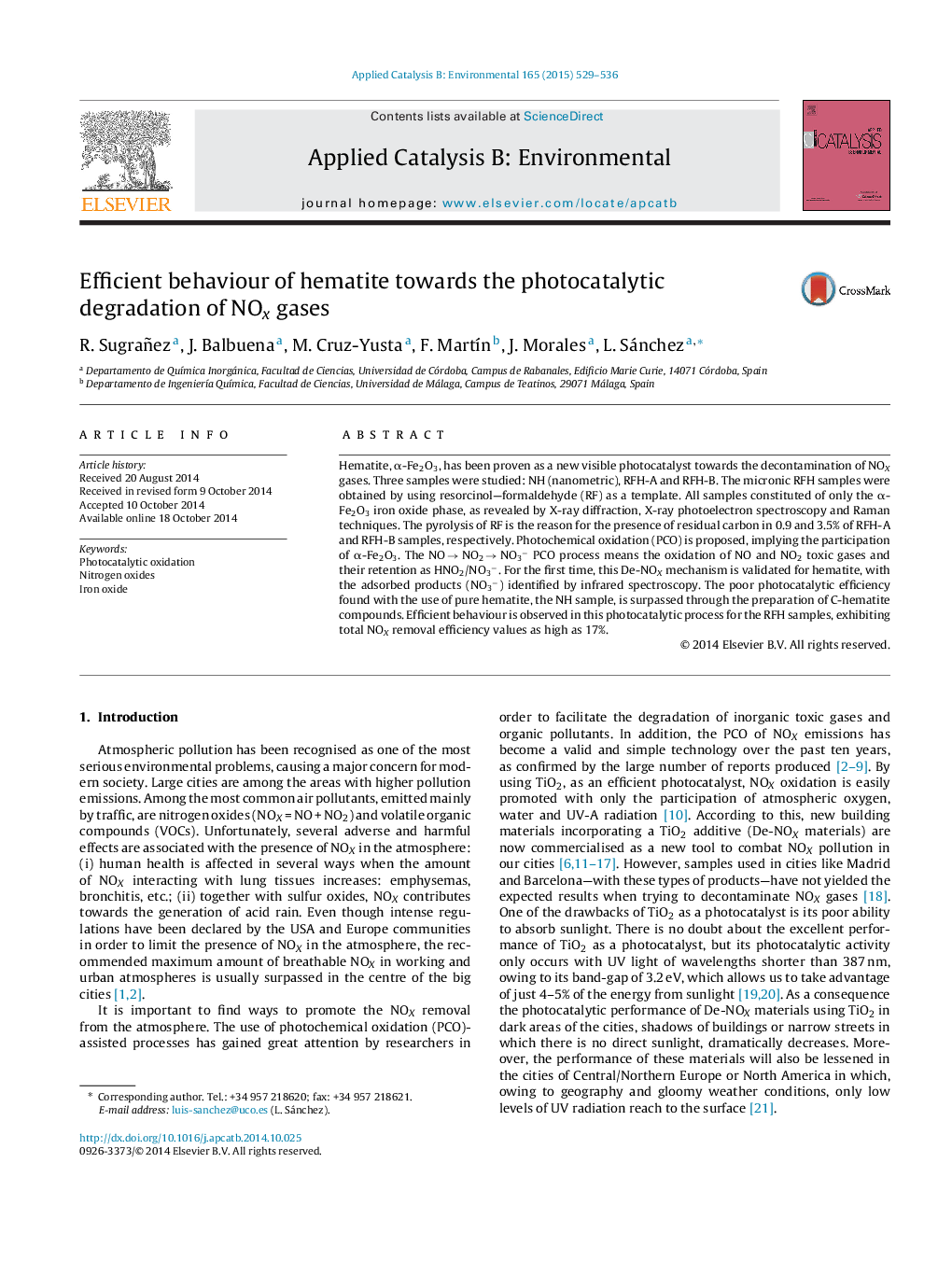| Article ID | Journal | Published Year | Pages | File Type |
|---|---|---|---|---|
| 45584 | Applied Catalysis B: Environmental | 2015 | 8 Pages |
•Hematite, α-Fe2O3, acts as an efficient photocatalyst in De-NOX processes.•C-hematite compounds can be prepared by using resorcinol—formaldehyde as a template.•Hematite, under UV–Vis irradiation, promotes the oxidation NO and NO2 toxic gases.•The NOX gases are retained as nitrate on the surface of hematite particles.•The presence of carbon greatly increases the efficiency of the PCO process.
Hematite, α-Fe2O3, has been proven as a new visible photocatalyst towards the decontamination of NOX gases. Three samples were studied: NH (nanometric), RFH-A and RFH-B. The micronic RFH samples were obtained by using resorcinol—formaldehyde (RF) as a template. All samples constituted of only the α-Fe2O3 iron oxide phase, as revealed by X-ray diffraction, X-ray photoelectron spectroscopy and Raman techniques. The pyrolysis of RF is the reason for the presence of residual carbon in 0.9 and 3.5% of RFH-A and RFH-B samples, respectively. Photochemical oxidation (PCO) is proposed, implying the participation of α-Fe2O3. The NO → NO2 → NO3− PCO process means the oxidation of NO and NO2 toxic gases and their retention as HNO2/NO3−. For the first time, this De-NOX mechanism is validated for hematite, with the adsorbed products (NO3−) identified by infrared spectroscopy. The poor photocatalytic efficiency found with the use of pure hematite, the NH sample, is surpassed through the preparation of C-hematite compounds. Efficient behaviour is observed in this photocatalytic process for the RFH samples, exhibiting total NOX removal efficiency values as high as 17%.
Graphical abstractFigure optionsDownload full-size imageDownload as PowerPoint slide
